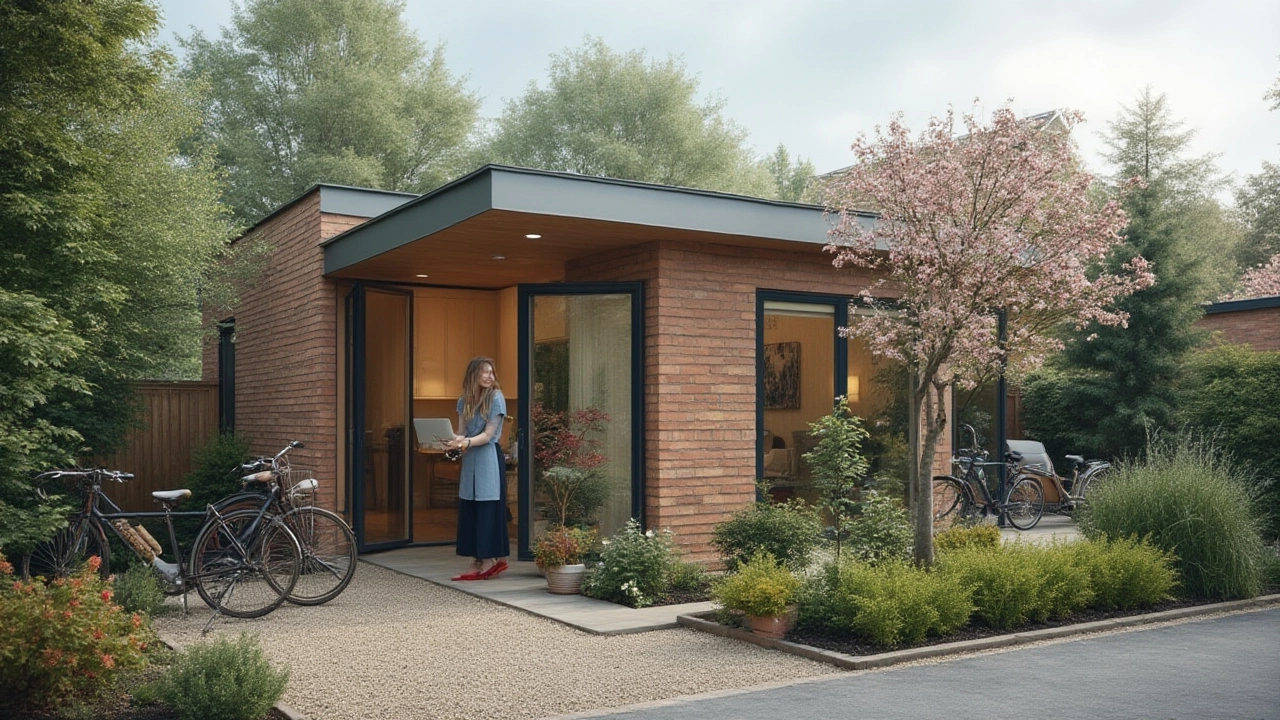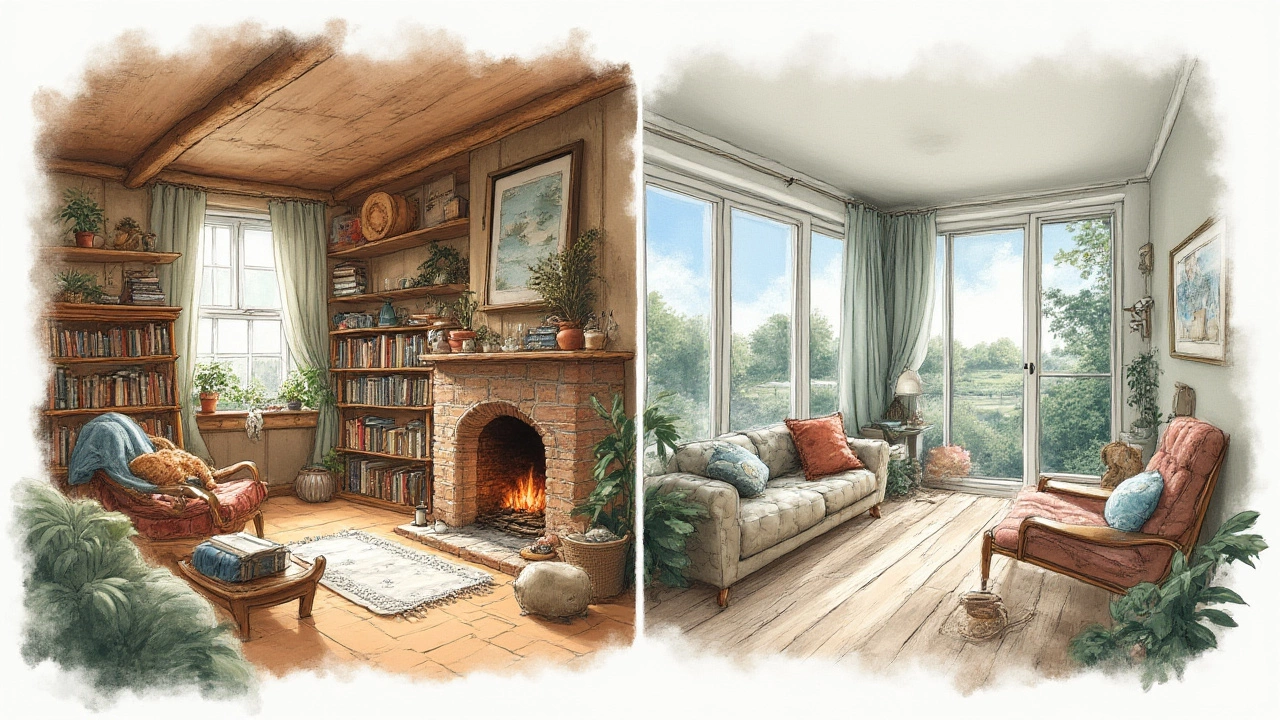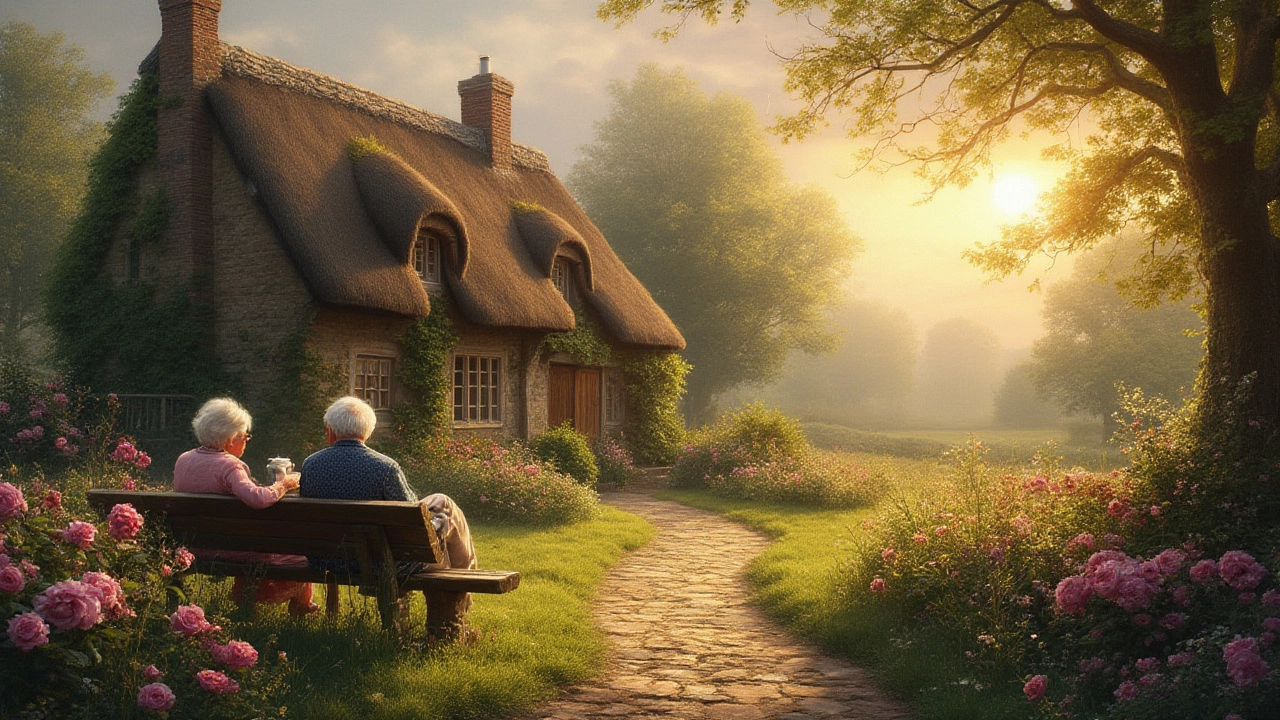The internet is a swirl of dream homes: tiny houses on wheels, storybook cottages tucked under trees, beach shacks glowing with sunset light. But walk past a charming little place and ask ten people – is that a cottage or just a small house? Even my eleven-year-old, Romy, once asked me if our friend's place was a cottage "because it had that squishy sofa and funny chimney." The question isn't simple or boring. It opens up a whole world of history, architecture, and even how a home makes us feel.
Cottage and Small House: Meaning, History, and Visual Clues
First off, the word “cottage” actually has deep roots. Originally, it refers to modest rural dwellings in medieval England, usually built for farm workers or tenants. They were simple and functional, but had a snug, welcoming vibe. The Latin root "cotagium" means the home of a cottager – basically, someone who didn't own land but did have a patch of garden for growing veggies and keeping some chickens. Smaller than a typical farmhouse, cottages were linked to the countryside, not to city or town life.
Modern use of “cottage” varies by country. In the UK or Ireland, the term still means a small rural dwelling, often with thick stone or brick walls, low ceilings, exposed wooden beams, and a steeply pitched roof (to shed lots of rain and snow). In Canada or the United States, “cottage” often means a seasonal vacation home by the lake or in the woods, but the vision always involves coziness, a certain rustic charm, and usually something a bit quirky or old-fashioned. Ever seen an English cottage garden in full summer bloom? That mix of hollyhocks, foxgloves, and roses is something people try to copy from Wales to Wisconsin.
A small house, on the other hand, is just what it says: a house that’s smaller than average. There's no historical baggage, no romance attached. It could be modern or old, urban or rural, newly built or ancient. A small house is built to be efficient, make the most of space, and offer all the functions of a bigger house on a tinier scale. But its style, shape, and even vibe can change totally depending on who lives there, where, and what year it's built in.
Here’s a quick cheat sheet of features, just to clarify:
- Cottage: Tends to have a particular style—pitched roof, fireplace, small windows, often one story, garden, sometimes a thatched or shingled roof, sometimes stone walls, leaning into a "quaint" look.
- Small house: Any style from modern boxy minimalism to an old craftsman. May have urban details, like straight lines, flat roofs, bigger windows, open concepts, etc. Not aiming for a specific "look."
Take a look at this comparison:
| Feature | Cottage | Small House |
|---|---|---|
| Origins | Rural, historical, often UK or European | Neutral, any location |
| Size | Small, one to one-and-a-half stories | Small, but could be modern or older |
| Design Elements | Picturesque, rustic, cozy, detailed roof, stone or wood | Any (from ultra-modern to traditional) |
| Typical Use | Primary home or vacation retreat | Primary home |
| Feel/Vibe | Charming, storybook, nostalgic | Functional, practical, neutral |
| Location | Countryside, lakeside, woodland, sometimes by the sea | Anywhere (city, suburbs, countryside) |
So while all cottages are small houses, not every small house can claim to be a cottage.

How Lifestyle Shapes the Difference
So the technical definition is just the start. Lifestyle separates the mood of a cottage from the practicality of a small house. When people fantasize about buying a cottage, they aren’t just thinking about square footage—they want a different rhythm of life. They’re picturing wood smoke curling from a chimney, shelves stuffed with books, old furniture that tells a story, pots of jam-making bubbling on the stove, and lazy mornings with birdsong instead of traffic noise.
Architecture plays a big part in this feeling—cottages tend to have smaller, cozier rooms that encourage togetherness. The rooms might have slanted ceilings, little nooks under staircases, and maybe a stone or brick fireplace. Walls can be thick enough to muffle the outside world. Windows might offer a green garden view, or at least a little patch of wildflowers. A cottage garden is rarely manicured; it's a riot of local plants and herbs, and probably a lopsided birdbath somewhere in the mix.
There’s also the seasonal aspect. In the UK, "going to the cottage" is less of a thing. But in Canada or the northern US, families talk about "the cottage" as a getaway spot, sometimes passed from generation to generation. Even city types who barely know how to light a fire want to escape to a cottage. My husband Fletcher can build a fire blindfolded. Me? I’m better at tending the garden and making endless pots of tea. The magic is the same: slow living, comfort, nostalgia.
By contrast, most small houses are designed for full-time living. You’ll see efficient, space-saving solutions everywhere—think Murphy beds, built-in shelving, retractable tables, and clever storage systems. Rooms feel open and multi-purpose, walls may be thinner, the kitchen might serve double duty as a home office. There's nothing old-fashioned about a small contemporary home: just check the rising trend in tiny houses (usually defined as 400 sq ft or less). These homes are about pairing down, going light on clutter, and squeezing life into every square inch.
Different regions have their own twists. In Japan, for example, the average home is much smaller than a U.S. home, but it follows principles of simplicity and multi-use. Finnish "mökki" are rustic summer cottages built near lakes, but with their own quirks: some have wood-fired saunas, smoke-blackened walls from generations of burning birch logs, and freezing swims that are a rite of passage.
The numbers back up these feelings. According to a 2023 report by Statista, 32% of American adults said they dreamed of owning a cottage or cabin, while over 60% believed a small house could help them save money and stress. The “cottage core” trend, all over TikTok and Instagram right now, is less about real architecture and more about a fantasy of how life could feel in a home with soul.
The cottage lifestyle can be summed up as: cherish comfort, embrace imperfection, get a little muddy, and don’t worry if the kitchen table comes from grandma’s attic. In a small house, priorities lean toward: streamline, organize, maximize utility, keep things tidy and portable. It’s not about better or worse—it’s about fit.

Tips for Choosing and Living in Either
So, thinking about moving? The first step is figuring out what really matters to you. Is your dream to live somewhere that feels plucked from a storybook? If yes, a cottage might be your future. Or do you need a manageable, low-maintenance home with all the essentials, but little fuss? Then a small house could be perfect. Here are a few side-by-side tips and inspirations to help you decide—and make the most of whatever you choose:
- Think about your daily habits. Love yard work and baking? Cottage living might suit you. Prefer organization and easy cleaning? Lean small house.
- Consider cost and maintenance. Old cottages can be money pits if they need constant repairs, while newer small homes could be more energy efficient.
- Insist on a sense of place. A cottage feels like it belongs where it sits—built from local stone in Cornwall, logs in Vermont, timber in Bavaria. Small homes can be anywhere, but if you crave connection to the land, look for older buildings or at least ones with character.
- Value for resale? Small houses in cities can be easier to sell. Cottages in rural spots might take more time, but draw a loyal kind of buyer.
- Room to grow? Small houses often have more straightforward potential for additions or updating. Cottages might be limited by protected status or their age.
- Plan for guests. Many cottages have quirky layouts—think tiny rooms, sloping floors. Small houses may be better for having friends or family come to stay.
- Pay attention to utilities. Cottages, especially older ones, sometimes have wood stoves, old pipes, or septic systems. Smaller new houses probably come with efficient tech.
- Get inspired by both worlds. You can always decorate your small house with cottage-style wallpaper, vintage doors, and wildflowers to bring that cozy spirit into any size space.
If you’re going for authenticity, the devil is in the details. Cottage windows suit lace curtains or woven Roman shades, while small homes often use minimal blinds or sleek roller shades. Cottages glow in the evening with the light from brass lamps, wood fires, or candles, and you’d likely find mismatched mugs in the kitchen cabinet. If you want a bit of both, there’s nothing stopping you from mixing clean lines (like in a modern small house) with a splash of well-chosen old treasures from flea markets.
One thing people forget: cottages are often about community. In many older cottage neighborhoods, there are shared fences, story-swapping sessions on front porches, jam jars and biscuits traded over the garden wall. Small houses, especially in the city, might be more private, focused on the bubble of your own family. But you can build neighborliness anywhere—sometimes, all you need is a kettle and the nerve to offer a slice of cake to the folks next door.
When I asked my daughter, Lennox, what the difference is, she said, “A cottage makes you want to read by the fire, but a small house makes you want to do a puzzle at the table.” Maybe it really is that simple. Or maybe, as adults, we overthink the magic of "home." Either way, knowing exactly what you want is half the fun. If you find a place that makes you smile every time you walk in, you’ve made the right choice—no label needed.
